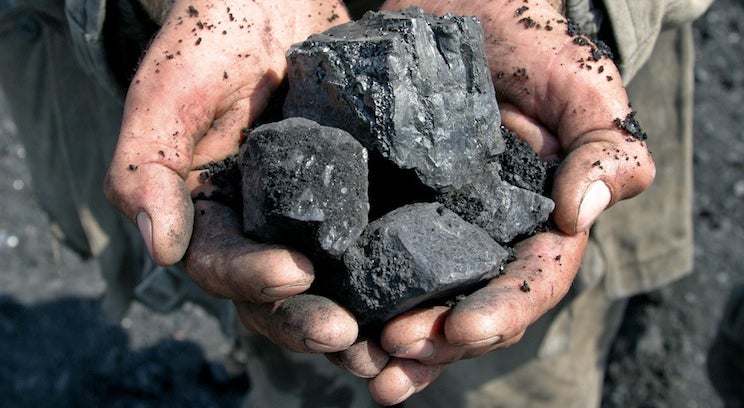
You last saw our fictitious legal team struggling to grasp how employee texts could be binding contracts. Now, deputy general counsel, Barry Miles and his friends in Supply Chain, look for ways to stay competitive in the face of significant requirements related to conflict minerals, with no authority to add headcount.
We can’t do it,” John Lane, the vice president of Supply Chain adjusted his glasses and crossed his arms resolutely. “I don’t have the manpower. We can’t comply with the requirements for conflict minerals, and most of our suppliers refuse to certify their minerals.”
Barry Miles, the deputy general counsel of Sunderland Manufacturing, frowned. “So why are we having this conversation?” he asked.
“Because we must,” Lane hissed, voice ringing with urgency. “We are an ethical company and we should care where our minerals come from.”
“We are, but unlike public companies, we don’t have to report to the Securities Exchange Commission. So why the urgency?” Barry was still bewildered.
“Because our publicly traded customers and competitors must report their progress, which means they’re making progress,” Lane replied, waving a sheaf of papers at Miles. “Right now I have five of these sitting on my desk and we have no good answers.” He slammed the papers before Miles, who peered at them cautiously. Each was a Conflict Mineral Resource Template, a standard questionnaire requiring detailed disclosure of the origins of the 3TG used in Sunderland Manufacturing’s products.Many companies face this challenge. Public companies must report their progress (implying there should be progress in verifying their minerals are conflict free), and private companies are dragged along, if not by altruism, then by competitive pressures and inquiring customers. Human resources to move towards compliance are often short, both in the companies and their downstream suppliers. So what to do?
What is the issue around conflict minerals?
Certain countries around the world are plagued by civil wars and strife funded by the international sale of conflict minerals. Despite having an estimated $24 trillion in natural resources, the Democratic Republic of Congo (“DRC”) is one such example. Civil wars in the DRC have left more than five million dead, the production mines reportedly use children as young as seven to perform hard labor under life-threatening hazardous conditions, and an estimated 30,000 children have been kidnapped from their homes and trained as soldiers by warring factions.
What are conflict minerals?
Generally, conflict minerals are minerals mined without government oversight and sold to support armed militias, childhood slavery, and other human rights abuses. The SEC identifies the following four minerals and their derivatives, dubbed “3TG”:
1. Tantalum
2. Tin
3. Tungsten
4. Gold
What are the reporting requirements?
With the goal of choking off funding for militia groups, in 2010 the Dodd-Frank Wall Street Reform and Consumer Protection Act was signed into law. US publicly traded manufacturers containing 3TG minerals must disclose to the Securities and Exchange Commission (SEC) their use of conflict minerals that originated in the DRC or an adjoining country (Covered Countries).
The European Union is also pushing large companies to perform due diligence on the origins of their 3TG minerals.
Presumption trap for the unwary
If companies cannot determine whether or not their supply chain contains conflict minerals, they must report that they are not conflict-free.
In conducting its due diligence, a company’s methods are expected to follow a nationally or internationally recognized due diligence framework, such as the OECD’s “Due Diligence Guidance for Responsible Supply Chains of Minerals from Conflict-Affected and High-Risk Areas" or the IPC-1755 conflict minerals Data Exchange Standard.
Companies required to report are subject to penalties for failing to do so, although there appear to be no bright line rules for how penalties will be assessed.
Why should private companies care?
For private companies, the immediate issue is not one of legal compliance, but the extent to which they wish to demonstrate commitment to the principles underlying the Dodd-Frank Act, competitive strength, and existing codes of business ethics. It is estimated that in the United States, some 280,000 suppliers provide products to the 6,000 companies that do report, hence the pressure for even private companies to comply in order to remain competitive.
What are companies to do?
Companies can take a long-term view of this issue. Many companies do not yet have direct visibility to smelters or refiners and cannot yet certify that their supply chains are conflict-free, but some are investing resources to establish conflict-free status.
- Begin with a conflict minerals policy you can post on your web site and share with inquiring customers.
- While some companies have employees responsible for conflict mineral compliance, this may be part of other responsibilities, making resource allocation an issue.
- If headcount is an issue, consider whether some components of supplier due diligence can be handled through a third party service. Vendors provide a variety of services, ranging from software solutions (e.g., Thomson Reuters and Assent), to consultants, such as RGP. Obtaining external assistance may increase efficiency and consistency, but your company remains accountable for the results and representations made to customers.
- Also to address lack of headcount, consider implementing an internal cross-functional task force dedicated to implementing conflict minerals management systems, communicating them throughout the organization and aligning suppliers with your conflict minerals policy.
- Consider taking a risk-based approach, focusing on the suppliers posing the highest risk, based on location, the nature of the components, and likelihood that they might contain non-compliant conflict minerals.
- Assuming you cannot yet verify compliance along your entire supply chain, develop a consistent approach for addressing non-compliant suppliers and responding to customer pushback.
- Negotiate contract clauses requiring suppliers to adhere to the regulations. Request smelters supplying your 3TG products to obtain conflict-free certification and seek alternative conflict-free suppliers where feasible.
- Participate in industry-wide initiatives to leverage information and common processes. Some industry efforts such as the Conflict-Free Sourcing Initiative, publish lists of refiners and smelters it has deemed to be conflict free, and others that participate in the program at various levels of compliance.
- If you have the manpower, deploy employees to physically examine smelters*.
*Takes ore and melts it to extract the metal it contains. Smelters are a pinch point in the mineral supply chain so compliance has been focused on certifying smelters as conflict free, rather than individual mines.
Sidebar References
The Cobalt Pipeline, Tracing the path from deadly hand-dug mines in Congo to consumers’ phones and laptops
Most companies in the dark on conflict minerals
EU mandatory due diligence for importers
When smartphones were linked to more than 5 million deaths




